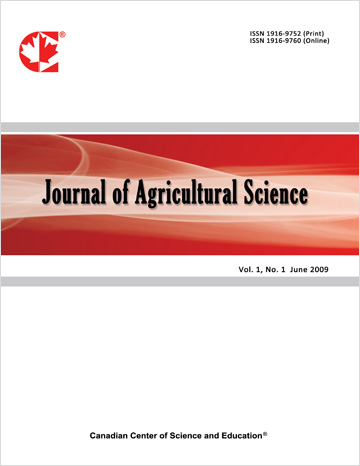Potential Use of Insects as Raw Material in Food for Feed to Alleviate Some Chicken Production Constraints in Adamawa Region, Northern Cameroon
- Maurielle Eke
- Kévin Tougeron
- Thierry Hance
- Leonard S. Ngamo Tinkeu
Abstract
Chicken production in Cameroon is steadily increasing, even in regions traditionally dominated by cattle and goat farming. A significant constraint to this growth is the high cost and limited availability of feed, which represents the largest portion of overall production costs. To enhance the sector’s contribution to population well-being, sustainable feed alternatives are essential. Black soldier fly larvae (BSFL, Hermetia illucens) present a promising solution by converting organic waste into nutrient-rich biomass, offering a sustainable method for waste management and producing high-quality proteins, lipids and micronutrients to help mitigate supply shortages of premix (vitamin concentrates) essential for feed formulation. To explore stakeholder acceptance of insect-based feed, a study was conducted in the Vina Division of the Adamawa region in Cameroon, from July to August 2023, involving 107 participants. The survey examined socioeconomic profiles of poultry farmers and poultry feed sellers, and afterwards focused on the acceptance of the use of BSFL as ingredient in poultry feed. Results indicated that poultry farmers were predominantly male, aged between 30 and 40 years. Most poultry farmers had attained a secondary education, while the majority of poultry feed sellers had only completed primary education and lacked formal qualifications in chicken breeding. Consequently, their skills are poor, less than five years of experience. The most important constraints identified were high costs of ingredients needed in the formulation of feed, product marketing difficulties and, disease management. Traditional protein sources like soybean, fishmeal, and groundnut cake were commonly used, but there was notable openness to insect-based feed. Around 76% of poultry farmers and 100% of poultry feed sellers were willing to use BSFL if they were cost-effective and beneficial for poultry health. The acceptance of insect meal indicates a promising future for its use in poultry feed formulations, pending further studies to confirm its efficacy and economic viability.
- Full Text:
 PDF
PDF
- DOI:10.5539/jas.v17n10p1
Journal Metrics
- h-index: 67
- i10-index: 839
- WJCI (2023): 0.884
- WJCI Impact Factor (2023): 0.196
Index
- AGRICOLA
- AGRIS
- BASE (Bielefeld Academic Search Engine)
- Berkeley Library
- CAB Abstracts
- ChronosHub
- CiteSeerx
- CNKI Scholar
- Copyright Clearance Center
- CrossRef
- DESY Publication Database
- DTU Library
- e-Library
- EBSCOhost
- EconPapers
- Elektronische Zeitschriftenbibliothek (EZB)
- EuroPub Database
- Excellence in Research for Australia (ERA)
- Google Scholar
- Harvard Library
- IDEAS
- iDiscover
- Jisc Library Hub Discover
- JournalTOCs
- KindCongress
- LIVIVO (ZB MED)
- LOCKSS
- Max Planck Institutes
- Mendeley
- MIAR
- Mir@bel
- NLM Catalog PubMed
- Norwegian Centre for Research Data (NSD)
- Open J-Gate
- OUCI
- PKP Open Archives Harvester
- Polska Bibliografia Naukowa
- Qualis/CAPES
- RefSeek
- RePEc
- ROAD
- ScienceOpen
- Scilit
- SCiNiTO
- Semantic Scholar
- SHERPA/RoMEO
- Southwest-German Union Catalogue
- Standard Periodical Directory
- Stanford Libraries
- SUDOC
- Swisscovery
- Technische Informationsbibliothek (TIB)
- Trove
- UCR Library
- Ulrich's
- UniCat
- Universe Digital Library
- WorldCat
- WRLC Catalog
- Zeitschriften Daten Bank (ZDB)
Contact
- Anne BrownEditorial Assistant
- jas@ccsenet.org
